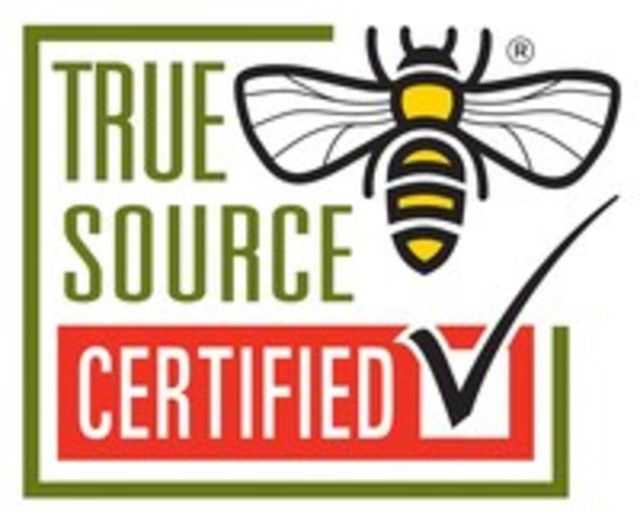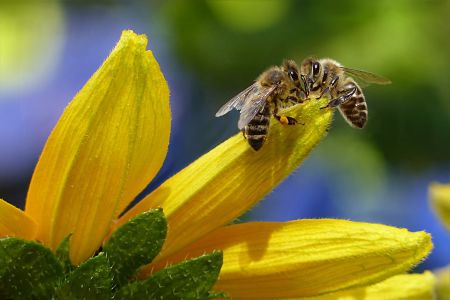When I think of smuggling cartels, I think of cocaine, weapons, honey, booze. Honey? Yeah, honey. When you’re The Food Lawyers®, you know that honey smuggling is something we all should be thinking about. For openers, more than half the “pure” honey sold in supermarkets is purely fake.
It begins in China, who’s been producing fake honey since the ‘70s. They start with honey and then add water and beet sugar or rice syrup (made from rice starch – yuck). The product sometimes contains forbidden chloramphenicol antibiotic fed to the bees to fight fatal larvae bacteria. It also can contain lead residue. The U.S. caught on to all this and put such a heavy tariff on Chinese honey that it was all but banned in the U.S. But China wasn’t finished, and this is where the smuggling starts.
The Chinese honey industry counters the U.S. tariffs by heating and filtering out all pollen that could genetically identify the product’s origin. This also removes/destroys beneficial enzymes in the honey and reduces it to glorified sugar syrup. Then, they mix in pollen (and sometimes bee body-parts) from another country that isn’t subject to the U.S.-China tariff in order to fool the genetic testing. Sometimes they adjust the viscosity with chemicals. The “honey” is then shipped to the country the mixed-in bee pollen came from to be re-labeled as originating there, and from there it’s shipped to the U.S. to be fed to American consumers. This is called “honey laundering,” it works just like “money laundering.” Bad guys doing bad things and making it look like it’s all on the up-and-up.
Sometimes honey counterfeiters don’t bother starting with real honey. They start with beet syrup or high fructose corn syrup add some pollen and chemicals to make it test and taste like honey, and voila, you have “honey.”
Honey is counterfeited in places other than China, but mainland China is the undisputed champ.
These scams are particularly effective because the U.S. government doesn’t seem to care. The U.S. Department of Agriculture (“USDA”) lets the producers decide whether their honey is Grade A, B, or C. They can put “USDA Grade A Honey” on the jar without any government supervision. The fox guarding the henhouse.
Some U.S. importers conduct testing. But, if an importer finds a problem, the honey goes back to the seller who re-sells it to someone who won’t test it. There is no requirement to report anything to the government.

Here’s another scam: Jars labeled “100% pure organic honey.” When bees are turned loose, they roam where they feel like and pollenate any plants they choose. Some may be organic and others not. Unless you’re releasing the bees on an organic farm on a mountainside in Tibet, which almost never happens, you can forget about 100% organic honey.
Retailers are an important part of the scam. They don’t know (or care) if it’s fake, as long as they get the lowest price and they rely on the producer to confirm it’s the real thing. So now, the fox has gone from guarding the henhouse to telling the farmer, “Trust me. Everything’s OK in there.” And since the Chinese producers are selling honey below what it costs U.S. producers to even make it – – the retailers are loving the low-priced fake stuff. That’s why less than 1/3rd of the honey consumed in the U.S. comes from inside the U.S.
But the problem goes far beyond honey on the retail shelf. Large swaths of the U.S.
agriculture rely on commercial beekeepers to pollenate crops. The California almond crop, estimated worth $5 billion per year, is 100% dependent on bee pollination. When you consider that cheap honey imports contribute to the U.S. losing about 30% of its bee industry each year, and U.S. bees are already stressed from overuse, judgement day isn’t far away.
So, why doesn’t government do something? Because counterfeit honey isn’t making anyone sick and it isn’t a sexy political issue. No politician is going to make “honey fraud” her/his signature issue, and there’re no mega-industry lobbies pouring money into it on the side of the beekeepers to buy political favors. Like everything else in this world, follow the money and you’ll get the answer.
The Food Lawyers® take:
The government isn’t going to do anything any time soon, but there are things we can do as individual consumers to protect our families from fake honey and help honest domestic beekeepers.
- Expect to pay a little more to get the real thing. The cheapest stuff is very likely real junk.
- Look for the “True Source Certified” and “Made with True Source Certified Honey” label. This U.S. industry association traces honey from the hive to the table. No one is perfect, but these guys do a good job and I trust them. About 30% of the honey in the U.S. is “True Source Certified.” Their logo looks like this.

- Honey sold at local farmers’ markets or roadside stands is usually a safe bet. I like honey from roadside stands because it tastes like the plants in the area. I bought some honey from a roadside stand at the edge of the desert one time. I could see the desert with every taste. Wonderful.
- Touch the honey. Pure honey should be thick and viscous in texture (not thin and runny), have no saccharine aftertaste, and be silky when rubbed between the fingers.
- Real Honey is a super-saturated solution of two sugars: glucose and fructose. Since it’s super-saturated, it’s a natural chemical process that some of the sugars eventually come out of solution and the honey will crystallize. It’s still good and healthy. Some people like spreading this better because it doesn’t drip. If you want to return it to its viscous state without destroying the beneficial enzymes, put the jar in a large pot of warm water and stir it until the crystals disappear. You may have to change the warm water a couple of times, but if the honey crystalizes, you know you’ve got the real thing. (If you happen to have a yogurt maker, that will do a great job of applying just the right heat level.)
When you buy real honey, you’re protecting your family, the U.S. bee industry, and U.S. agriculture that relies on bee pollination. When you buy the fake stuff, it’s literally a buzz kill.

